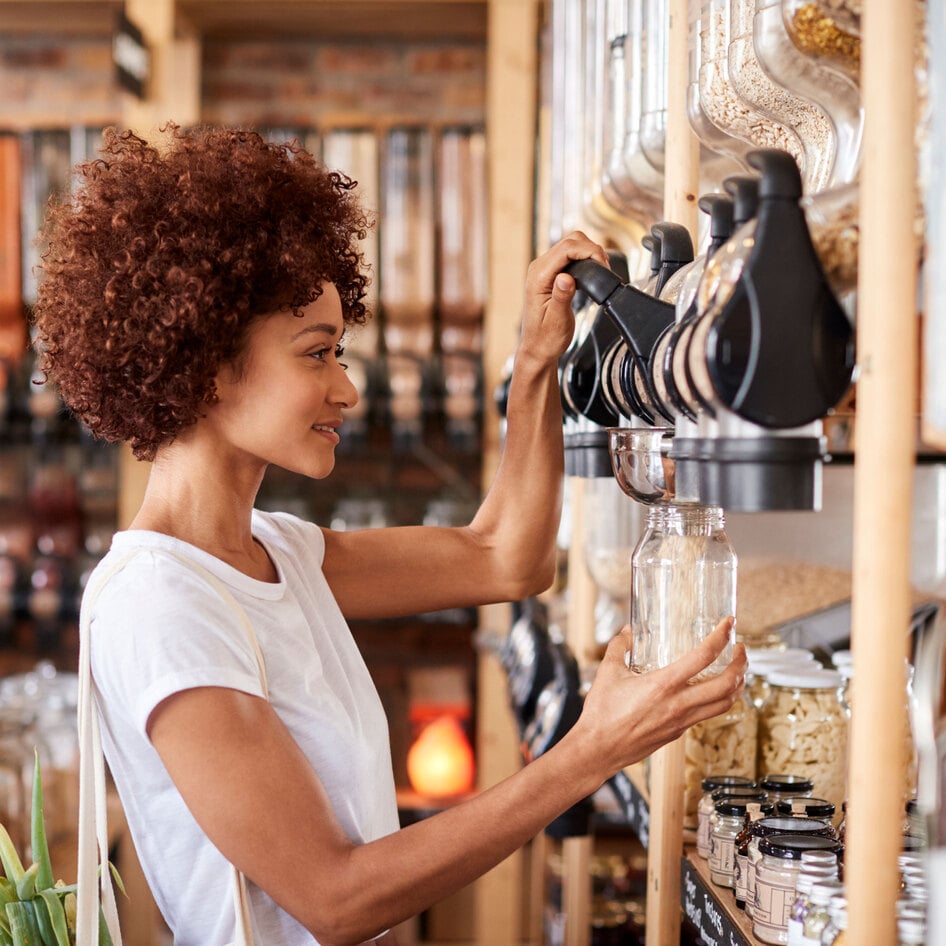The average American eats approximately 90 bananas per year and, chances are, the Dole Food Company is behind a large number of them.
Dole’s banana story began in 1899 when Joseph, Felix, and Luca Vaccaro, along with Salvador D’Antoni, pooled their resources to begin importing bananas from La Ceiba, Honduras, to New Orleans, LA. They soon did much more than export fruit.
 Dole
Dole
“The four early entrepreneurs started operating steamships, growing their own fruit, and competing for the ice needed to ship bananas to a hungry and curious world,” Bil Goldfield, Director of Corporate Communications for The Dole Company, tells VegNews. “That spirit of innovation and resourcefulness has continued ever since.”
Through the decades, Dole has been at the forefront of numerous advancements. In the 1920s, the company built the Vicente d’Antoni Hospital in Honduras, and by the 1950s, it pioneered the efficient shiping of bananas.
The 1970s saw Dole embracing organic farming, ahead of its time in sustainable agricultural practices. And in the 1980s, the company engaged in nutritional research and marketing efforts to help make bananas as ubiquitous as they are now.
Dole’s top 10 banana facts
On its 125th anniversary, Dole is peeling back the layers to share some intriguing aspects of its banana legacy to show how these sweet, yellow fruits have captivated Americans for more than a century.
 Dom J/Pexels
Dom J/Pexels
1 Boxed bananas
In the 1950s, Dole pioneered the transportation of bananas with its boxed shipping which dramatically improved the way bananas were shipped across continents.
Before this innovation, bananas were typically transported in large bunches, which made them prone to bruising and spoilage during the long journey from tropical farms to global markets.
By adopting boxed shipping, a game-changer in the fruit logistics sector, Dole was able to individually pack bananas, significantly reducing physical damage and extending the fruit’s shelf life. This also allowed for more efficient stacking and handling, thereby optimizing cargo space and reducing transportation costs.
 Gratisography/Pexels
Gratisography/Pexels
2 Grocery staple
In the last 125 years, bananas have achieved 90-percent household penetration. To learn more about its consumers, Dole recently commissioned a survey of 2,000 Americans about their shopping habits.
The company found that shoppers make an average of two trips to the supermarket each week, with an average budget of $162 per trip. The preferred time for grocery shopping among Americans is 8am to 10am, while the least favorite time is 4pm to 6pm.
What are shoppers buying most? You guessed it: bananas.
In fact, 35 percent of consumers ranked bananas as a must-have grocery staple, outranking other produce items and even some supermarket essentials such as eggs, meat, and milk.
 Getty
Getty
3 Top impulse buy
Dole found that shopping on an empty stomach can lead to overspending, with hungry shoppers spending an average of $26 more per trip. To stave off the munchies, shoppers often reach for bananas right before heading to the register, making bananas the top impulse produce purchase.
“The survey confirms that bananas have grown from a popular produce to the very top of the list of ‘must-buy’ fruits and vegetables on every grocery trip and one of the most-purchased items in the supermarket,” Goldfield says.
 Dole
Dole
4Top sugar replacement
Beyond being a beloved snack, bananas rank third—behind honey and maple syrup and ahead of stevia, agave, and monk fruit—as a sugar replacement in baking and cooking recipes, highlighting their versatility in culinary applications.
“Beyond serving as a sugar replacement, bananas have become significantly more common as an ingredient in lunch, dinner, side dish and cocktail recipes that extend the fruit’s ubiquity beyond just breakfast, smoothies, and dessert,” Goldfield says.
The presence of bananas at all meal occasions isn’t a fluke, but the result of promotional efforts on Dole’s part. “Bananas and plantains are now considered an after-dark staple following years of Dole’s work to position the fruit in new dayparts,” he says.
 Getty
Getty
5People love green bananas
According to Dole, nearly one-third (29 percent) of Americans prefer eating bananas that are at least partially green, with 6 percent opting for them to be mostly green.
To ensure that bananas are delivered to consumers at their preferred ripeness, Dole taps its Technical Services Department to work with wholesalers and retailers
“Dole’s tech services travel onsite to customer facilities to audit ripening room functions, train team members, visit local retail stores, and provide recommendations that are tailored to each customer’s needs and goals,” Goldfield says.
 Dole
Dole
6The Dole Way
The Dole Way reflects Dole Food Company’s commitment to sustainability, focusing on water management, soil conservation, renewable energy, and biodiversity. This approach includes implementing water recirculation systems in 83 percent of its banana packing plants and using advanced irrigation techniques to minimize water waste.
Soil health is enhanced through the application of bio-compost and the use of vegetative covers to prevent erosion. Energy-wise, Dole has installed photovoltaic solar systems in key locations, supporting a shift towards renewable resources.
Additionally, the company actively maintains thousands of hectares of protected forest and engages in reforestation efforts, helping to preserve biodiversity in the regions where it operates.
 Dole
Dole
7 100,000 jobs
Globally, the banana industry employs 23,000 people directly and 100,000 people indirectly, significantly impacting the global agricultural sector. These jobs range from field laborers to professionals in administration and logistics, supporting an industry that drives infrastructure development and technological advancements.
“The entire banana value chain serves as a source of income for thousands of families in Latin America, particularly in rural areas, helping to support livelihoods and stimulate economic activity in these regions,” Goldfield says.
This economic influence is crucial in sustaining local communities. Since 2005, Dole’s DALE Foundation has invested more than $36 million in education and community programs in Ecuador.
 Scott Webb/Pexels
Scott Webb/Pexels
8High-tech bananas: drones and AI
Bananas might not seem so high tech but behind the scenes, they are. That’s because Dole has operated its Agricultural Research Department for more than 70 years to ensure the tech behind its banana production is continuously evolving.
In fact, it invests close to $10 million in key projects such as the development of new banana varieties that are resistant to diseases; automated irrigation systems to optimize water usage; and employing artificial intelligence to refine fruit production estimation and ripening processes.
This use of AI enables more precise management of the ripening process, ensuring that bananas are delivered to consumers at peak freshness.
Additionally, Dole utilizes drones for efficient and targeted disease control, minimizing the environmental impact of traditional spraying methods.
 Dole
Dole
9 Bobby Banana
Did you know that Dole’s bananas have an official mascot? Meet Bobby Banana, a banana yellow mascot who has been promoting healthy eating and living for more than 30 years, sometimes taking the form of a 7-foot-tall plushy.
Created in the early 1990s, Bobby Banana quickly became a beloved figure, appearing in educational programs, community events, charitable engagements, and Dole’s advertising campaigns.
This year, Bobby Banana’s contributions to promoting health and fun are being honored with a special exhibit at the National Mascot Hall of Fame in Chicago.
 Dole
Dole
10Banana Hall of Fame
For its 12-month-long “banana-versary” celebration, Dole launched a number of engaging campaigns and initiatives, including its own Banana Hall of Fame to recognize significant contributions to the banana industry and its culture.
The Dole Banana Hall of Fame honors those who have played a pivotal role in elevating the banana from a simple piece of produce to a beloved symbol of nutrition and culinary versatility.
“All of us at Dole are well aware that we could never have made it to our banana quasquicentennial—our 125th year of growing and marketing bananas—without the help of other banana ambassadors with a similar passion for the fruit,” Goldfield says.
The inaugural inductees include Brennan’s Restaurant in New Orleans, credited with creating the famous Bananas Foster dessert; the City of Latrobe, Pennsylvania, recognized as the birthplace of the banana split; and, of course, Bobby Banana, which makes him a two-time Hall of Famer.
For more plant-based stories like this, read:
JUMP TO ... Latest News | Recipes | Guides | Health | Shop









